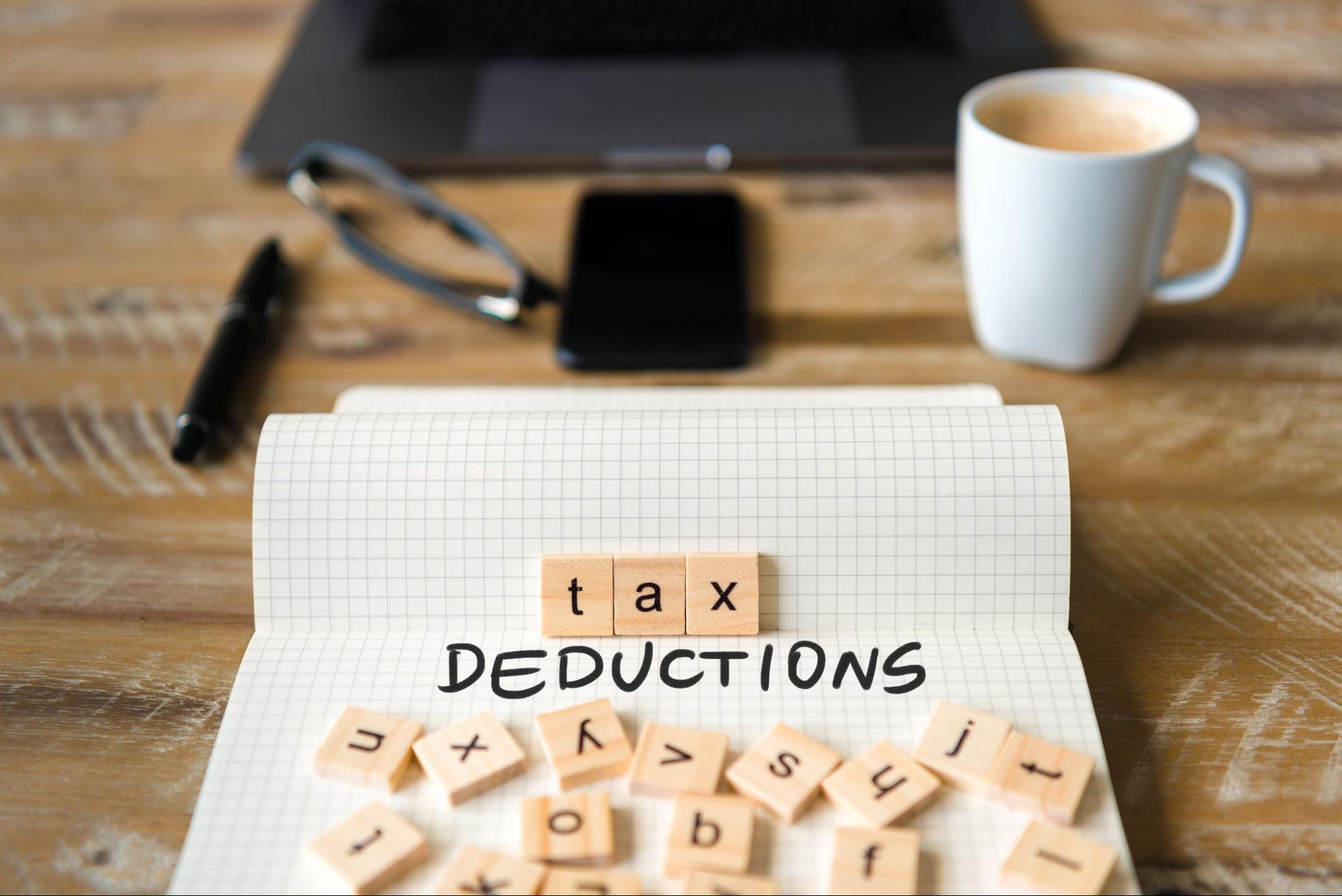When stay-at-home orders hit in 2020, the world of business was forced to quickly adjust to a work-from-home environment due to COVID-19. The process came with many growing pains. Now, though, even as many can return to offices, more and more companies are . It seems work from home is here to stay in a much larger capacity than it was in previous years.
However, when workers start spending more and more time at home, their home utilities and amenities become a crucial part of their job. At the same time, household costs may increase as people use things like electricity, heating and cooling, and the internet.
To most employees, it would seem unfair to suddenly be burdened with increased household costs due to a compulsory work-from-home arrangement. Luckily, the Canada Revenue Agency offers a solution to this problem in the form of a tax credit allowing Canadians to deduct home office expenses from their taxes.
The issue is that, like many tax credits and rebates, the CRA won’t offer it to you automatically, and it will be up to you to calculate and claim your own tax credits. If you don’t understand how these credits work, you risk overpaying on your taxes or, worse, incorrectly reporting your taxes and facing the consequences.
This article will cover everything Canadians need to know about calculating and claiming work from home expenses on their taxes. We will cover the two methods the CRA provides and help you determine which is right for you.
The easy way: the flat rate method
For the 2020 tax year, the CRA introduced a new way to claim home office expenses, vastly simplifying the process. While both options still exist, this is far easier and will suffice for most people who don’t want to use the more in-depth method.
While the method was offered as a temporary measure in 2020, they later extended it for the 2021 and current 2022 tax years. It is unclear if they will keep this option in place for future years or if they will take it away as we put the pandemic behind us, but at least for now, it remains an option.
The flat rate method is pretty simple: you report how many days you worked from home in a given tax year, and you can deduct $2 for every day reported. The maximum amount of money that you can claim is $500, or 250 days of work. When doing your taxes, you will claim this work from home credit on a T777S form to be included with your income tax return.
To qualify for this tax credit, you must have worked from home for more than 50% of the time over any four consecutive weeks of the year. Neither you nor your employer needs to keep or file any documentation to support your claim beyond this form. However, the CRA reserves the right to review any claims and may do so randomly. So, as usual, be as truthful as possible when filing these claims.
The hard way: the detailed method
The detailed method of reporting work-from-home expenses can take a lot more work, but it also more accurately reflects your actual work-from-home expenses, which can benefit those with high expenses. With this method, you will calculate what amount of your household expenses went towards your employment based on the area used within your home and the number of hours used.
Eligible expenses
There are various expenses that may or may not be eligible for a tax credit. Eligible expenses include:
- Rent costs of the home or apartment you live in
- Maintenance costs for your home such as minor repairs, cleaning supplies, paint, and more
- Internet access costs
- Office supplies such as paper, pencils, folders, printer ink, and more
- Basic cell phone plan costs
- Cost of any long-distance calls made for work
Employees who earn commissions in addition to their regular income are also allowed to claim
- Home insurance
- Cost to lease equipment such as a cell phone or computer to be used for earning commission income

Ineligible expenses
The list of ineligible expenses under this tax credit includes:
- Capital cost allowance
- Mortgage interest payments
- Principal mortgage payments
- Capital property expenses such as replacing windows, flooring, or furnishings
- Office equipment such as printers, fax machines
- Monthly costs for a landline phone
- Purchases of cell phones, computers, laptops, etc. or computer accessories like a monitor, mouse, webcam etc.
- Other electronics
- Furniture
- Any expenses that your employer has already reimbursed or will reimburse you for
It is not always obvious what can and can not be claimed, so if you choose to go this route, study the full list carefully to ensure you claim only eligible expenses.
Eligibility requirements
If you intend to claim this tax credit, there are some eligibility requirements you will need to meet. To be eligible, you must meet all of the following:
- Worked from home in the tax year either by choice or at the request of your employer
- Paid expenses for the space in your home where you work
- Mainly used your workspace for at least four consecutive weeks
- The expenses you paid are directly used in your work
- You must have a filled out T2200s or T2200 form from your employer indicating your work-from-home employment arrangement
When claiming expenses, you will need to keep all supporting documents to make sure amounts are accurate and that you can prove your claim. This may include receipts, invoices, bills and more.
In order to calculate your work-from-home expenses, you will need to calculate what is called your work-space-in-the-home expenses. Because you pay home expenses for hours outside of work and spaces in the home unrelated to work, this figure represents the actual percentage of your expenses that went towards work exclusively.
Calculating your work-space-in-the-home expenses
To calculate your work-space-in-the-home expenses, you will need to add up the expenses you paid during the tax year for each of the following:
- Electricity, heat, water, home internet access fees
- Maintenance costs
- Home insurance
- Property taxes
- other expenses such as rent
This figure represents how much your expenses were in total, but you now must find out what percentage of these expenses went towards your job. To do this, you first need to figure out the size of your workspace in relation to your home’s total area. For example, if your workspace is 150 square feet in a 15000 square foot house, your workspace represents 10% of your entire area.
Next, you must determine how long you worked per week. For example, if you worked 40 hours a week out of a maximum of 168 hours a week, 23% of each week you spend working. Now multiply those two percentages together along with your work-from-home expenses.
Continuin from the above example, assuming you had work from home expenses of $15,000, the calculation would look like this:
(40 ÷ 168) x 10% = 2.3%
2.3% * $15,000 = $345
This figure is known as your employment-use amount. It is used along with your other work from home-related expenses like office supplies and your employment income amount to determine your tax credit and amount to be carried over to future years if eligible.
You will fill all of this out on the same T777S tax form used for the flat rate method or a T777 if you are claiming other employment expenses beyond your work-from-home expenses.
If that all seemed a bit in-depth for you, the CRA provides an all-in-one calculator to help determine your eligibility and take care of some of the math for you. You will still need to enter all the relevant information about your workspace and expenses, but it should take a lot of the hard work out of calculating your claim and save you from any math errors.
Which method should I use?
When comparing the two methods for determining your work-from-home tax credit, the temporary flat rate method is by far the easier of the two. So why should someone use the more precise method?
Well, in most cases, they shouldn’t. If you don’t have high work-from-home expenses, haven’t kept supporting documents, or simply don’t want to do the math, you can easily claim the flat rate and be done with it. However, if you have higher work-from-home expenses, it may be worth considering the more detailed method.
Though you won’t truly know your employment expenses until you’ve done the calculations, you can try working out a rough estimate of your expenses. If you think they will come out to over $2 a day, you could lower your taxes further with the detailed method.

Working with an accountant to file work-from-home expenses
The choice between the two methods may be easier if you have an accountant who files taxes on your behalf. As long as you have kept all the supporting documents, they can handle the forms and the hard work for you. If you plan on making a claim using the detailed method, we highly recommend working with a tax accountant, as they will help you avoid any errors or omissions and maximize your claim amount.
Regardless of your choice, if you are eligible for the work-from-home tax credit, you should probably claim it, as it can help reduce your taxes owing by a significant amount per year.
Corben joined CREW as a relative newcomer to the field of real estate and has since immersed himself and learned from the experts about everything there is to know on the topic. As a writer with CREW, Corben produces informative guides that answer the questions you need to know and reports on real estate and investment news developments across Canada. Corben lives in Guelph, Ontario with his partner and their two cats. Outside of work, he loves to cook, play music, and work on all kinds of creative projects. You can contact Corben at corben@crewmedia.ca or find him on Linkedin at https://www.linkedin.com/in/corbengrant/.









